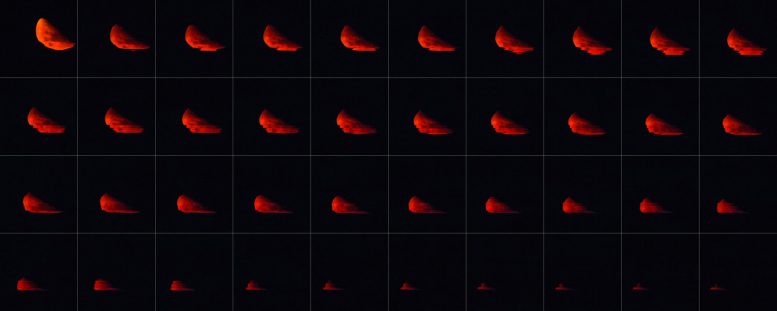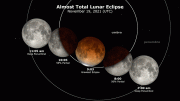
This photo montage shows a familiar cosmic object — the Moon — in a very unfamiliar way. Credit: P. Horálek/ESO
ESO Photo Ambassador Petr Horálek captured this photoset while visiting ESO’s high-altitude Paranal Observatory in Chile, where skies are remarkably clear. He snapped photographs of this striking blood-red moonset at five-second intervals, watching as the Moon sank through the dark sky before finally dipping below the horizon (the frames are ordered chronologically from left to right, and top to bottom).
The prominent red color of these images is due to the phenomenon of atmospheric refraction. As the Moon approaches the horizon, its reflected light must traverse more and more of the atmosphere before reaching our eyes, meaning that scattering becomes more prominent — in other words, there is more air for the light to push through, and more light is scattered. Of all the colors of visible light, the Earth’s atmosphere scatters and refracts red light the least due to its longer wavelength, casting sunsets and moonsets in a characteristic orange-red hue.
Alongside the color, the other notable feature of this image is the apparent rippling effect — the Moon appears to be melting! Again, this is an atmospheric effect; light rays are here unusually and unevenly refracted by layers of air with different densities, temperatures, pressures, humidities, and so on. The shape of the Moon also appears flattened due to the lensing power of the atmosphere, which pushes the lower sections upwards to create an oval or egg-like shape. These phenomena are all caused by differential refraction — essentially, each layer of the Earth’s atmosphere deals with the Moon’s light differently, resulting in this distorted, belted effect.









Be the first to comment on "Striking Images of Blood-Red Moonset at Five-Second Intervals"